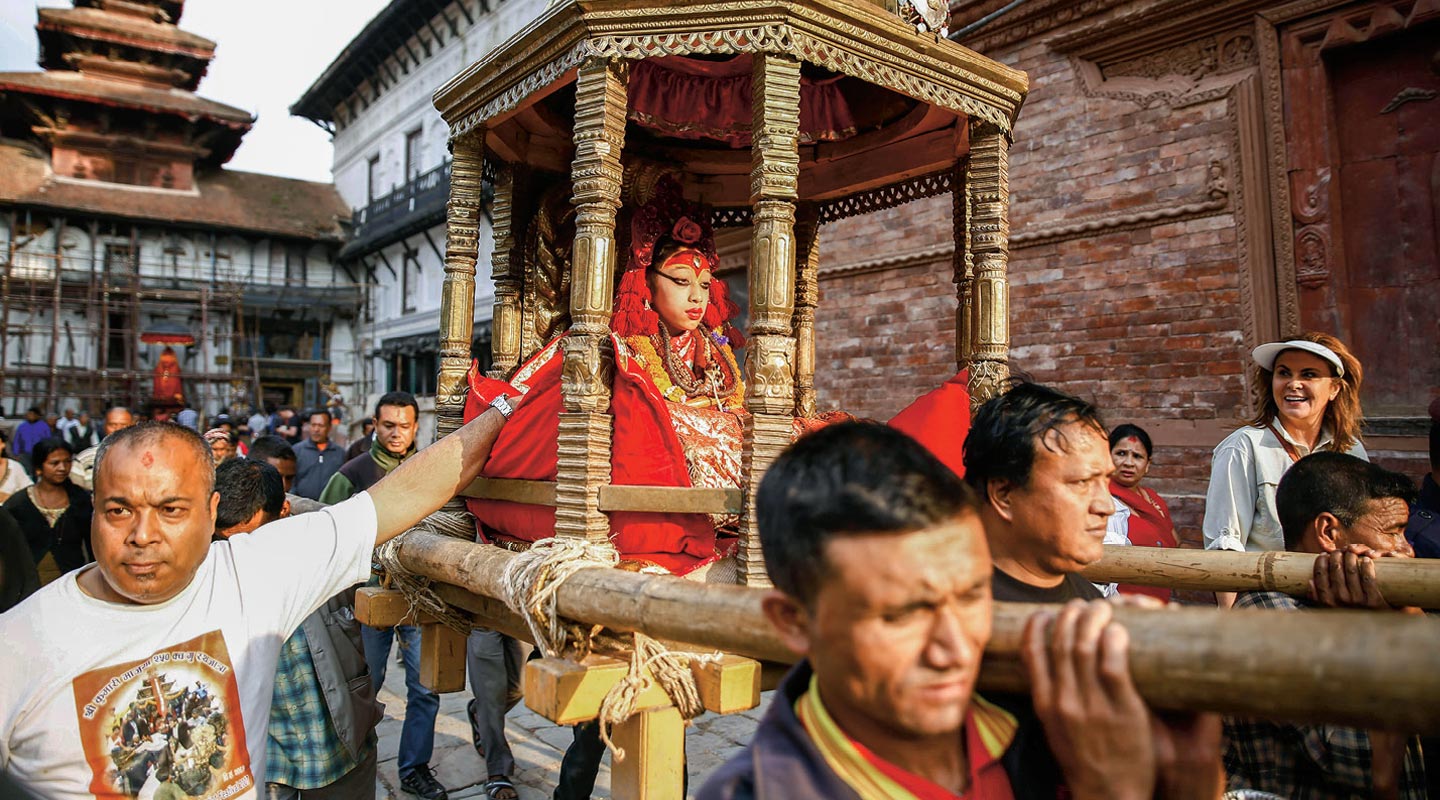Jim McMahon
Why is this young girl being treated like royalty? The Hindu and Buddhist people of Nepal consider her a kumari, a reincarnation of the goddess Durga. In a tradition dating back at least to the 10th century, priests select a handful of girls between ages 3 and 6; the chosen ones are believed to be able to heal the sick and predict the future. Even a glimpse of a kumari is said to bring good fortune to locals. But being a living goddess is far from easy: The girls can leave their homes only to attend festivals—and when they do go out, their feet aren’t allowed to touch the ground, so they must be carried. Their roles end once the kumaris reach puberty, and at that point, the girls often have trouble adjusting to normal life. Child rights activists have criticized the tradition, and the kumaris themselves have talked of starting a counseling group to help one another transition to their “mortal” lives when the time comes. “The connection [with former kumaris] is crucial,” says Maria Contreras Coll, a photographer who has documented the tradition. “The community really helps them to go back to their normal life.”

